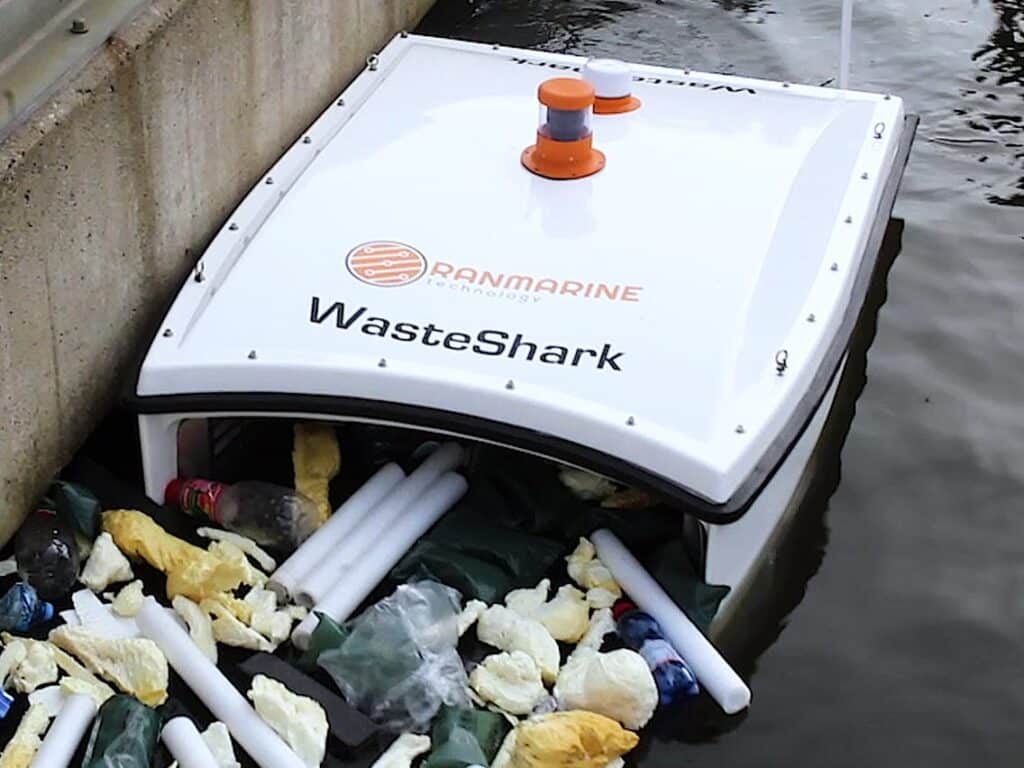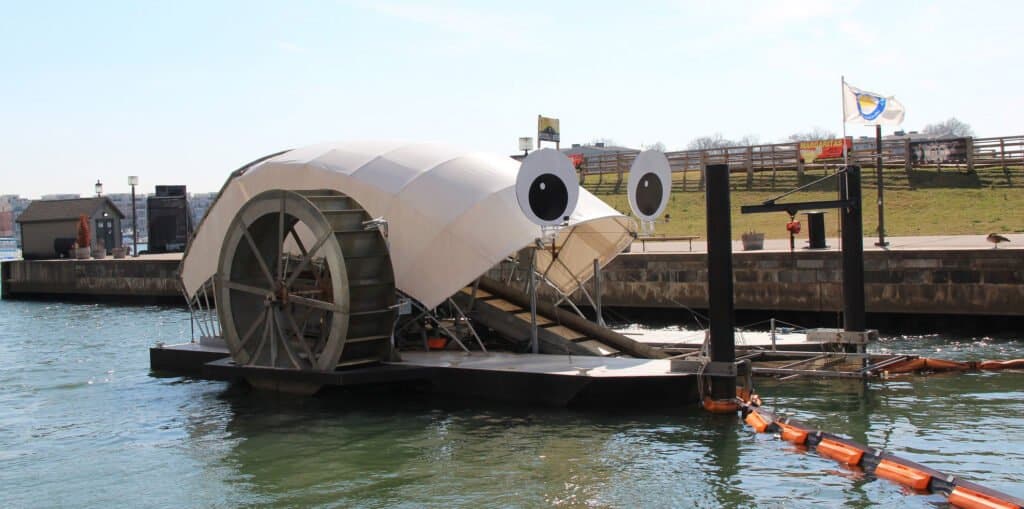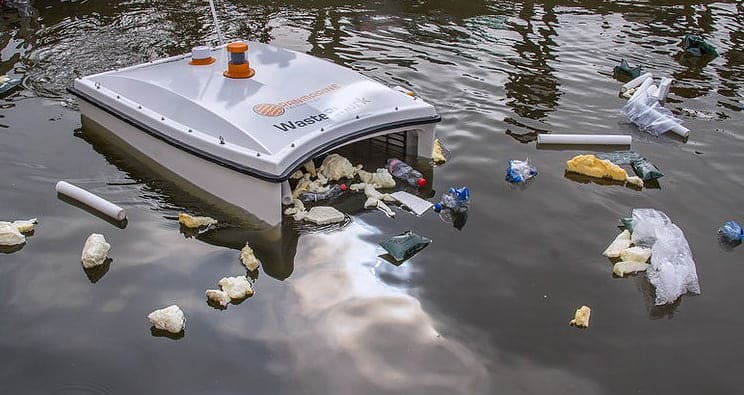New autonomous boats and a “wheel” that intercepts drifting waste clean up the water surfaces.
Marine debris is a growing concern that's forcing innovators to flex their wits, designing autonomous boats capable of eating anything they find on the water. The latest development comes from the Danish company RanMarine Technology. The company has created an acquadrone called WasteShark which literally sucks waste out of the water like a Roomba (including the fact that it recharges itself), cleaning up to 200 liters of rubbish in a single run.
Autonomous ships that eat waste
The tiny autonomous ship is already sailing along the rivers of the Danish city of Århus, picking up waste and bringing it ashore.
And that's not all: the Danish company is also adding a flying drone to do teamwork and help WasteShark better identify waste. Together, they will form a dynamic duo that finds, collects and "eats" garbage.

Like Robin with Batman
The flying drone is equipped with a unique lens that collects data as it scans waterways. A machine learning algorithm learns to recognize floating plastic and trash, then guides the WasteShark to collect it.
“We are testing a technology that can be scaled in many different ways,” he ditto Martin Skjold Grontved, special advisor to the Danish Ministry of Climate.
Water pollution has become a significant problem, especially because waste of plastic that accumulate on the surface of water bodies (and not only) are a threat to both marine and human life.
With the assistance of the flying drone, the autonomous boat can now even “see” oil spills, and with the help of a special filter clean them up.
At cleaning school
The same startup that designed the data collection algorithm for WasteShark has also partnered with the San Francisco Estuary Institute to use machine learning to understand the impact of waste prevention initiatives.
“Nonprofit organizations employ many volunteers for these tasks. And cleaning is already a very time-consuming process, let alone counting the amount of waste and dividing it into certain categories. Machine learning combined with drones can speed up and facilitate the process,” he says Tony hale, program director for environmental informatics at the San Francisco Estuary Institute.
The waste wheel has become an attraction

Not only autonomous boats in the future of the fight against waste: in the city of Baltimore there is the Trashwheel , a water wheel that intercepts waste. She has become a local star, a tourist attraction (I swear) complete with a dedicated Twitter profile.
And he started a family, too: in 10 years the waste wheels have increased, all with their fake eyes of one and a half meters.


